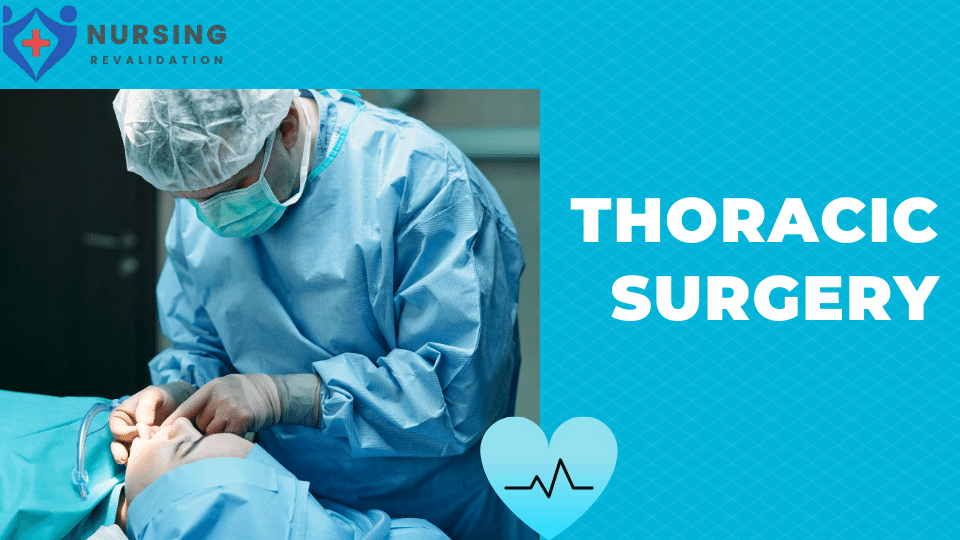Introduction
Thoracic surgery is a surgical procedure that involves the chest cavity or thorax. It is performed to treat a variety of conditions, including lung cancer, emphysema, and collapsed lungs. This surgery is a highly specialized field that involves the surgical treatment of diseases and disorders affecting the organs and structures within the chest cavity. With a focus on the lungs, heart, esophagus, and other vital structures, thoracic surgeons utilize advanced techniques and technologies to perform complex procedures aimed at improving patient outcomes and quality of life. From minimally invasive procedures to more traditional open surgeries, thoracic surgeons are at the forefront of innovation and progress in the field of surgical medicine. This article provides an overview of thoracic surgery, including its types, benefits, risks, and recovery.
Types of Thoracic Surgery
We can divide this surgical procedure into two broad categories: open surgery and minimally invasive surgery.
Open surgery involves making a large incision in the chest to access the affected organ, while minimally invasive surgery uses small incisions and specialized instruments to perform the procedure.
Minimally invasive surgery includes video-assisted thoracoscopic surgery (VATS) and robotic-assisted thoracic surgery. These procedures offer several advantages over open surgery, including shorter hospital stays, faster recovery times, and less pain and scarring.

Benefits of Thoracic Surgery
Thoracic surgery can provide several benefits to patients with thoracic conditions. For example, it can remove cancerous tumors, repair damaged organs, and improve lung function. It can also alleviate symptoms such as shortness of breath, chest pain, and coughing.
Risks of Thoracic Surgery
Like all surgeries, chest surgery carries some risks. These risks include bleeding, infection, blood clots, and damage to surrounding organs. Patients may also experience pain, swelling, and difficulty breathing after the procedure. However, the risk of complications can be minimized by choosing an experienced surgeon and following all pre-and post-operative instructions.
Recovery from Thoracic Surgery
The recovery process after chest surgery can vary depending on the type of surgery and the patient’s overall health. However, some general guidelines can help patients recover more quickly and comfortably.
After surgery, patients may need to stay in the hospital for several days to monitor their condition and manage any pain or discomfort. They may also need to wear a chest tube to drain excess fluid or air from the chest cavity.
Once discharged from the hospital, patients will need to rest and avoid strenuous activities for several weeks. They may also need to attend follow-up appointments with their surgeon to monitor their progress and ensure that they are healing properly.
FAQs
What conditions can be treated with thoracic surgery?
Thoracic surgery can be used to treat a variety of conditions affecting the organs and structures within the chest cavity. Some common conditions that may require thoracic surgery include lung cancer, esophageal cancer, heart disease, emphysema, pulmonary fibrosis, and thoracic outlet syndrome.
What types of procedures are involved in thoracic surgery?
Thoracic surgery can involve a range of procedures, from minimally invasive techniques like video-assisted thoracoscopic surgery (VATS) to more complex open surgeries. Common procedures include lobectomy, pneumonectomy, thymectomy, esophagectomy, and mediastinal tumor resection.
What is the recovery time for thoracic surgery?
Recovery time can vary depending on the type of procedure and individual patient factors, such as age and overall health. In general, patients can expect to spend several days in the hospital after thoracic surgery, with a total recovery time ranging from a few weeks to several months. Pain management, physical therapy, and other forms of support may be necessary during the recovery period.
Conclusion
chest surgery can be a life-saving procedure for patients with thoracic conditions. It offers several benefits, including the removal of cancerous tumors and improved lung function. However, like all surgeries, it carries some risks, and patients should carefully consider their options and discuss them with their healthcare provider. By following all pre-and post-operative instructions and choosing an experienced surgeon, patients can minimize their risk of complications and achieve a successful recovery.


